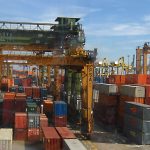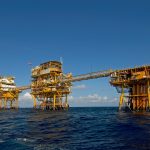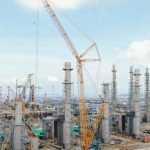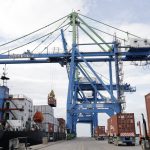Liga Asuransi – Dear readers, how are you? May your business and family always be in good order.
Lately, more and more often we hear of disasters, accidents, and even tragedies. One of them was the tragedy at the Kanjuruhan Malang football stadium which caused the loss of life of 127 spectators, hundreds of people were injured, and dozens of vehicles were burned.
As reported by national and international media, the 2022 Kanjuruhan Stadium tragedy was a mutual trampling incident that occurred at Kanjuruhan Stadium, Malang Regency on October 1, 2022. This riot was part of the local rivalry of the East Java Super Derby which brought Arema together with Persebaya Surabaya.
The tragedy of this riot is also considered the largest football disaster in the history of Indonesian and Asian football, as well as the second largest in the history of world football after the tragedy of the Estadio Nacional in Peru.
From an insurance perspective, the tragedy that occurred in Kanjuruhan has been categorized as an accident which is one of the requirements in an insurance agreement.
Please note that the definition of an accident according to insurance is an accident that occurs accidentally and unexpectedly that causes damage and loss or danger in the form of bodily injury, disability, death, and property damage.
As reported currently, the authorities are investigating to find out the cause of the accident with the aim of determining the responsible parties and finding out the causes so that it can be used as a measure to prevent the occurrence of similar accidents in the future.
As a senior insurance broker, we are very concerned about this tragedy. For that, we will try to explain the accident from the point of view of risk management and insurance. In the hope of helping officials and parties involved to complete the investigation process appropriately so that they can make wise decisions.
We hope that this article is useful for you. If you are interested, please share it with your colleagues so that they also understand like you.
Understanding the Risks
In general, the definition of risk is an uncertain situation and there is an element of danger, consequences, or consequences that can occur due to ongoing processes or future events.
All activities of individuals and organizations always contain risks because there is an element of uncertainty. The risk can occur due to the absence or lack of information about what will happen in the future, be it a profitable or detrimental thing.
As explained above, the risk is an inherent and inseparable part of our daily lives. Risk is like a spice in our lives. Sometimes it feels spicy and sweet. Without the risk of life, this feels bland but if the risk is too high it is also scary.
Understanding Accidents
According to Wikipedia accidents are unwanted, usually unwanted accidents that are not directly caused by humans.
The term accident implies that no one is to blame, but the accident may be caused by an unrecognized or unaddressed risk. Most researchers who study accidental injuries avoid using the term accident and focus on factors that increase the risk of severe injury and that reduce the incidence and severity of injuries.
For example, when a tree falls during a windstorm, its fall may not have been caused by humans, but the improper type, size, health, location, or maintenance of the tree may have contributed to the result.
In conclusion that an accident is an undesirable and detrimental accident that comes suddenly, suddenly, and unexpectedly
Accidents can happen anytime, anywhere, against anyone, and on everything. Accidents happened accidentally and are out of human control. There are those who say the accident could be a natural disaster or an act of God.
Examples of accidents
Almost every day, there is news about accidents. A huge fire that scorched dozens of homes. Train collision, the bus overturned and entered the ravine.
The cargo ship sank due to huge waves, the collision of ships in the Port, airplanes fell and were lost, and major floods hit the European region, China, and the American continent. Devastating bushfires ravaged parts of Australia. A gas pipeline explosion caused a fire and dozens of people were killed in a country in Africa. Riots in several countries caused damage to buildings and offices.
Can all these accidents be covered by an insurance policy?
One of the purposes of people buying an insurance policy is to get a financial guarantee in case of an accident as described above. For example, if there is a fire that scorches the building and the items inside.
To cover and compensate for losses caused by fire, the right insurance policies are fire insurance policies, Property All Risks insurance, and Industrial and Commercial All Risks.
If the insurance policy is in an active condition where the insurance period is still valid when a fire occurs, the insurance premium has been paid and the cause of the accident is guaranteed in the insurance policy, it is likely that the loss that occurred can be reimbursed by the insurance company.
However, to prove that the accident that occurred was really caused by the risks covered by the insurance policy, it is necessary to prove it. One method of proof is to use the principle of Proximate Cause or prime cause or main cause which is one of the 6 basic principles of insurance.
Understanding the Principle of Proximate Cause
Please be aware that every risk covered by insurance must have an accident that causes financial losses for the insured or customer.
Remember, not all accidents can be recognized as the cause of losses, but the accident must meet certain principles, namely proximate cause.
This proximate cause serves to find out the earliest major accidents that are the cause of the occurrence of losses to the object being borne.
It is this initial accident that is then used to determine whether it includes an accident covered by insurance.
For example, a factory is insured for the risk of fire without any additional guarantees including floods, earthquakes, hurricanes, and hurricanes.
Well, one day the factory had a fire. When there is a fire, conditions are during a typhoon. In response to this accident, the insurance company will find out the main cause of the fire whether it was due to a hurricane or an electrical short circuit.
If the main cause turns out to be a hurricane, the insurance company can reject the claim filed because the proximate cause does not include the guaranteed risk.
Therefore, it is very important to understand the proximate cause so as not to cause misperceptions between the insured and the insurance company at the time of filing the claim.
Definition of Proximate Cause
The International Risk Management Institute (IRMI) defines proximate cause as the closest cause that is causing that has the most significant impact in causing losses under a first-party property insurance policy when two or more independent hazards (stand-alone) operate at the same time or simultaneously resulting in losses.
Proximate cause is causa Proxima taken from the legal ruling “causa Proxima non remota spectatur”. Its meaning is “causa proxima or proximate cause and not causa remota or remote cause that is noticed”.
Please note that in every accident that causes losses there are several remote causes (distant causes) that play an indirect role in generating losses. However, when the proximate cause of the loss has been determined, then the remote causes of the loss can be ignored.
One example is if a ship runs aground because the lights in a lighthouse are off/ out. The proximate cause of the loss/damage to the ship is the accidental stranding of the ship. While the lights are off / outraged is a remote cause. This ruling was taken in the case of “lonicles v. Universal Marine Insurance Association (1863)”.
Another example is a ship colliding and being taken to the port to undergo repairs. The ship transported several goods in the form of fruits.
To facilitate repairs, the fruits were unloaded ashore and then loaded back onto the ship when they were completed. Due to the delay in the forwarding of such goods to the destination because of the process of repairing the vessel, the fruits become rotten.
The proximate cause of the loss/damage of these fruits is a delay, whereas the collision that gives rise to that delay and the process of unloading and re-loading the fruits is a remote cause (a distant cause) of the loss/damage of those fruits, as the judge ruled in the case of “Pink v. Fleming (1890)”.
The definition of proximate cause made by the judge in examining a standard legal case with regard to the proximate cause of the case “Pawsey v. Scottish Union and National (1907)” is expected to be a reference in resolving proximate cause cases.
The definition of proximate cause in question is an active and efficient cause that drives a series of events that give birth to an outcome, without the intervention/interference of a force that originates and works actively from a new and independent source”.
Based on the definition and explanation of the proximate cause above, it can be concluded that a cause that is qualified to become a proximate cause if it meets two conditions, namely first, the cause is a dominant cause or active and effective cause in producing a loss. Second, there is no disconnection between the chain of events between the cause and the loss itself.
Memahami Prinsip concurrent causes dan remote cause
- Concurrent Causes
In the context of proximate cause, what is meant by concurrent causes is if there are two or more causes that apply and operate simultaneously or simultaneously, but each cause stands independently, against the object of coverage, and simultaneously or simultaneously operates continuously until those causes cause cause/damage to the object of coverage.
To determine how much the insurance policy guarantees against those losses, it is necessary to first pay attention to the following points:
How the causes operate simultaneously. For example, fires and storms or riots
It is possible to be able to separate parts of that loss caused by each of these causes.
The status of each of those causes. Whether a hazard is guaranteed by the policy an insured peril or a peril insured against, or a danger that is excluded by the policy (an excluded peril or an excepted peril) a danger that is not mentioned at all in the policy (an uninsured peril or other peril)
An example is a factory insured under a normal/common fire policy experiencing losses/damages caused jointly (concurrently) but independently (independently) from each other by fire (an insured peril) and storm (an uninsured peril).
If it is no longer possible to distinguish between the loss/damage part caused by the fire and the loss/damage part caused by the storm, then all loss/damage is guaranteed by the policy because there is no excluded peril involved. If the distinction or separation can still be/part of the possibility to be done, then only part of the loss/damage caused by the fire alone is guaranteed by the policy.
If the same factory suffers a loss/damage caused jointly (concurrently) but independently (independently) from each other by fire (an insured peril) and riot (an excluded peril), and it is still possible to separate part of the loss/damage caused by each of those causes, then only part of that loss/damage caused by the fire alone is guaranteed by the policy.
Well, if such a separation is no longer possible, then the entire loss/damage is not guaranteed by the policy because an excluded peril was involved in the accident.
- Remote Cause
IRMI defines remote cause as a remote cause i.e. in the case of first-party property, a hazard that occurs before the nearest cause.
For example, in the sequence of occurrences of the type of situation where a hazard is followed by (but does not cause) a second unforeseen danger at the time the policy is issued.
In such a situation, the court held that the second danger was a substitute cause and thus became the closest cause of the loss. Coverage for losses depends on whether the cause in lieu of it is covered. In such a situation, the initial danger that is not chosen as the nearest cause is referred to as the distant cause.
As mentioned earlier that the provision of “causa proxima non remota spectatur” is what is used in applying the principle or doctrine of proximate cause to insurance policies made in the UK, in particular policies that provide that losses on the object of coverage are guaranteed if the main cause or proxima (the proximate cause) of the loss is a guaranteed hazard of the policy (a peril insured against or an insured peril).
With this provision, if it can be determined that a danger guaranteed by the policy becomes a proximate cause of losses to the object of coverage, then the causes or other causes that contribute to the emergence of the loss are ignored.
However, this provision does not apply if there is a special exception in the policy. The reason is that such exceptions have a priority position over general words.
If the remote cause is included in the words of that exception, it is sufficient for the insurer to certify that the loss has been caused by a hazard excluded from the policy guarantee.
The Role Of An Insurance Broker To Ensure Your Insurance Guarantee
From the explanation above, it can be seen that it is not easy to ensure that an accident is guaranteed or not by an insurance policy.
It takes qualified knowledge to design an insurance policy that can provide maximum protection to the insured. A slight mistake in the determination of the guarantee can make the insurance guarantee void and the accident that occurred is not replaced.
In addition, it is necessary to have expertise to argue with the insurance company to determine that the accident that occurred was the closest cause (proximate cause) of the accident. Failing to know this can lead to an insurance claim going unpaid.
To overcome all the above challenges the presence of an insurance brokerage company is urgently needed. Insurance brokers are insurance experts who have extensive knowledge and experience in the field of insurance.
Insurance brokers must have an Insurance Broker Expert certificate followed by the Financial Services Authority (OJK) and be approved by the National Professional Certification Agency (BNSP) of the Ministry of Manpower of the Republic of Indonesia.
By using the services of an insurance broker, make your insurance guarantee maximum which provides peace of mind for you.
One of the misunderstandings is that by using the services of an insurance broker, insurance premiums become expensive. Totally wrong, the reality is that on the contrary, the cost of insurance premiums becomes lower, and the coverage is maximum.
So, make sure each of your insurance policies is issued through the services of an insurance brokerage company.
One of the leading insurance brokerage companies in Indonesia today is L&G Insurance Broker. For all your insurance needs contact L&G now!
Sources:
- https://en.wikipedia.org/wiki/Accident
- https://nasionalre.id/en/portal/mengenal-prinsip-proximate-cause
—
LOOKING FOR INSURANCE PRODUCTS? DON’T WASTE YOUR TIME AND CALL US NOW
24/7 L&G HOTLINE: 0811-8507-773 (CALL – WHATSAPP – SMS)
website: lngrisk.co.id
E-mail: customer.support@lngrisk.co.id
—















